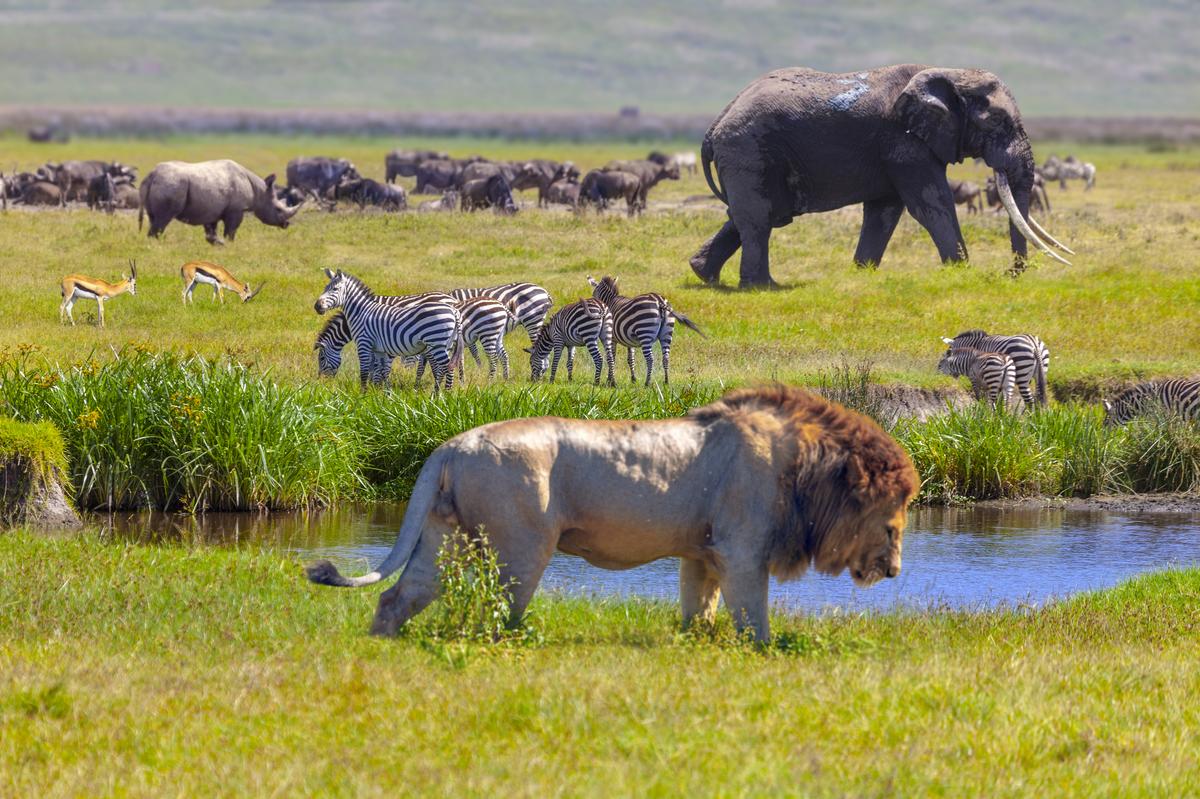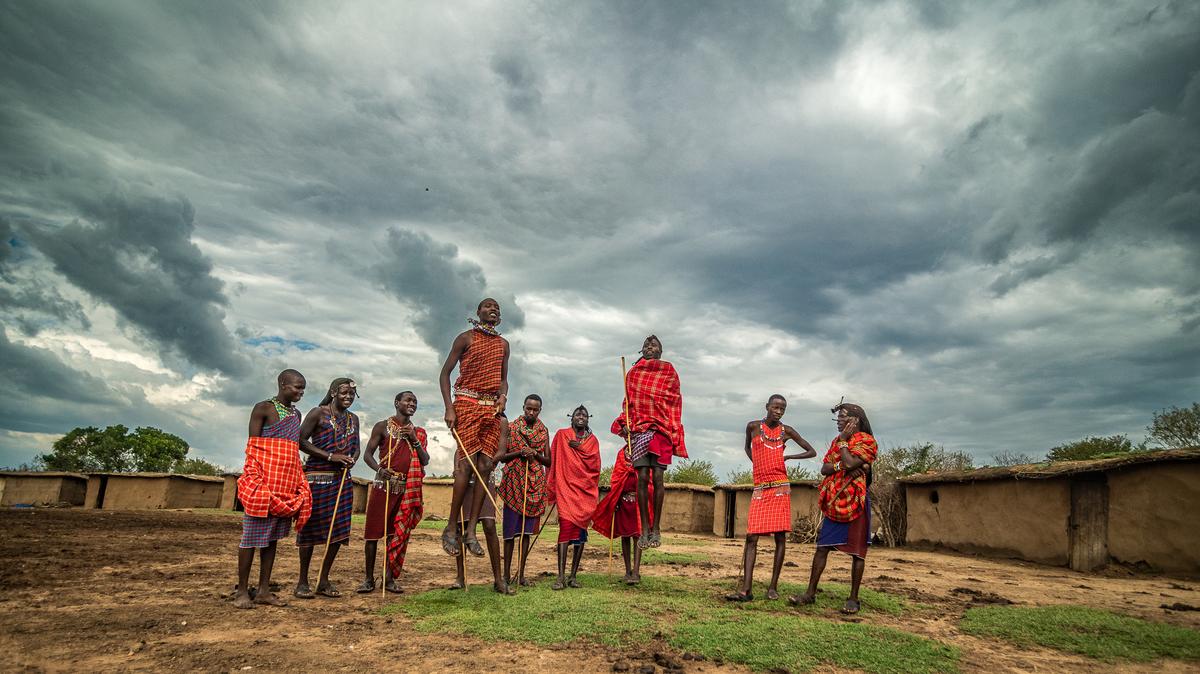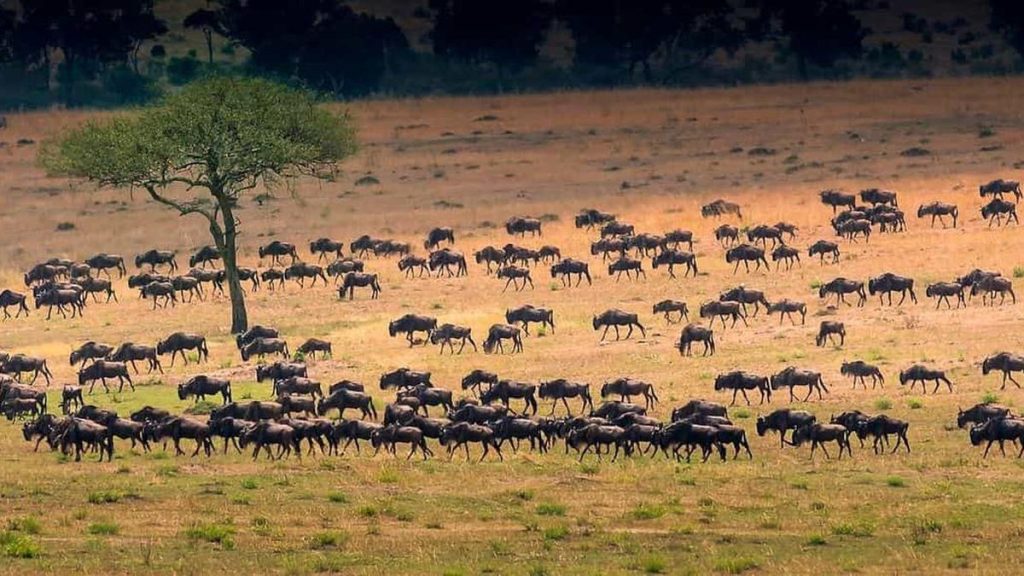
The great migration
| Photo Credit: Creative Commons
One of the most wondrous sights in Nature is that of vast herds of wildebeest and zebra along with Thomson’s gazelles and elands thundering across the plains of the Serengeti. This annual migration of beasts seeking fresh pasture as they move from the Serengeti National Park in Tanzania to the Masai Mara Reserve in Kenya is said to be the largest migration of mammals on Earth and is a major tourist attraction.

Rhinos, springboks, zebras, elephants and lions in Serengeti National Park, Tanzania.
| Photo Credit:
Getty Images/iStockPhoto
Stretching to around 15,000 sq.km, the landscape varies from grasslands and savanna to riverine forests and woodlands. The area is home to big cats such as lions, leopards and cheetahs; mammals such as the African elephant, African buffalo, the Eastern black rhino, hippopotamus, warthog, pangolin, and baboons; reptiles such as the Nile crocodile, black mamba, spitting cobra, and Nile monitor; and over 500 species of birds including the Masai ostrich, the secretary bird, crowned cranes, hadada ibis, African fish eagles and many species of vultures.
This is not to say that humans have no place in the system. The Serengeti has seen human habitation for almost four million years. Of the many indigenous people who still live here, the most famous are the Masai. Education and western cultural influences have not stopped the Masai from holding on to and preserving their traditions and way of life.

Of the many indigenous people who still live here, the most famous are the Masai.
| Photo Credit:
Getty Images/iStockPhoto
While the plains and its animal life were first mentioned in the late 1800s and early 1900s, it was the explorations of the 1920s and 1930s that brought to light the great migration and the initial photographs.
Despite being recognised as a UNESCO World Heritage Site in 1981, the park faces many threats such as deforestation, climate change, increasing human population, use of land for farming and raising livestock. and poaching. However, as the park is also a major tourist destination, the authorities use the revenue generated from tourism to support conservation initiatives, promote research and also educate and inform the local communities about the value of this ecosystem.
Fun Facts
Serengeti is derived from siringet, a Masai word that means endless plains.
Owing to the number of prey species, the Serengeti has the world’s largest population of lions.
In 2013, the great migration was judged to be one of the Seven Natural Wonders of Africa.
South-central Serengeti also contains a geologic wonder called kopjes, small hills of gneiss and granite. The Simba Kopje is said to be the inspiration for The Lion King’s Pride Rock.
Published – February 07, 2025 10:30 am IST








